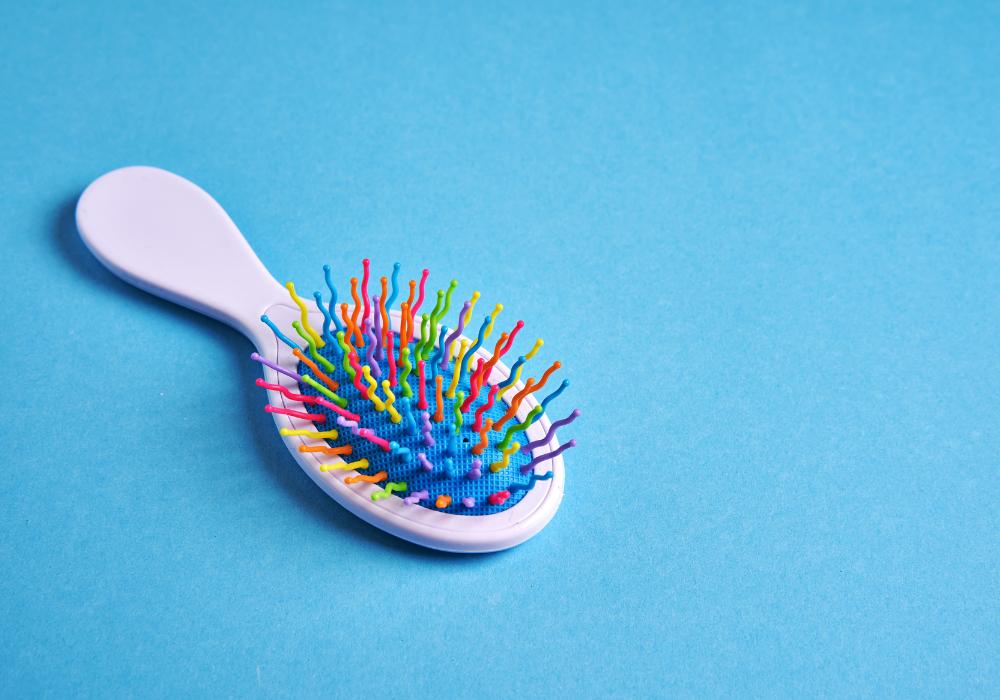Navigating the delicate task of detangling children’s hair can often feel like a daunting challenge. Whether dealing with morning routines or post-bath rituals, parents seek effective solutions that are safe, gentle, and free from harsh chemicals. DIY detanglers emerge as a nurturing alternative, offering parents the opportunity to craft personalized formulas tailored to their child’s specific hair needs. As Dr. Tanya Altmann, a pediatrician and author, advocates, “DIY detanglers allow parents to avoid potentially harmful chemicals and fragrances often found in commercial products, ensuring a safer experience for their children.” (Source: WebMD)
As a parent, I’ve experienced the struggle of detangling my child’s hair, especially after a day of play or sports. Finding the right detangler not only made haircare easier but also turned into a bonding moment filled with giggles and stories.
The Gentle Touch of Natural Ingredients
Natural ingredients such as aloe vera, marshmallow root, and slippery elm offer gentle detangling properties without causing irritation to a child’s sensitive scalp, as noted by Lorraine Massey, a hair care expert and author. “Natural ingredients like aloe vera, marshmallow root, and slippery elm offer gentle detangling properties without causing irritation or discomfort to a child’s sensitive scalp.” (Source: NaturallyCurly.com) These ingredients soothe the hair strands, making combing a tear-free experience.
Insights into Effective Formulation:
- Aloe Vera: Known for its moisturizing and soothing properties, aloe vera gel helps soften hair and ease knots.
- Marshmallow Root: Contains mucilage that coats and lubricates the hair, making it easier to detangle.
- Slippery Elm: Rich in polysaccharides, slippery elm provides a slippery texture that aids in smoothing out tangles.
Embracing Creativity and Bonding
Jessica Alba, co-founder of The Honest Company, emphasizes the joy of creating homemade detanglers with children. “Homemade detanglers are not only effective but also fun to make with kids, turning hair care into a bonding activity.” (Source: The Honest Company Blog) This hands-on approach not only strengthens the parent-child relationship but also educates children about the benefits of natural ingredients.
Practical Tip:
Involving children in the process of making their own detangler can foster a sense of responsibility and ownership over their hair care routine. It also allows them to explore creativity while learning about the importance of natural skincare.
Customizing for Specific Needs
Dr. Zoe Diana Draelos, a dermatologist, points out, “By customizing the ingredients in a DIY detangler, parents can address specific hair concerns, such as dryness or frizz, while keeping their child’s hair healthy and manageable.” (Source: American Academy of Dermatology) Whether dealing with curly locks prone to knots or fine hair needing extra moisture, adjusting the recipe ensures optimal results tailored to individual hair types.
Parenting Tip:
Observing your child’s hair texture and behavior can guide ingredient choices. For instance, thicker or coarser hair may benefit from richer ingredients like coconut oil or shea butter, while lighter oils like jojoba or almond oil suit finer hair types.
Affordability and Accessibility
Genevieve Howland, a natural parenting expert, highlights the practical benefits of DIY detanglers. “DIY detanglers are a budget-friendly option for parents, as they can be made with simple, affordable ingredients found in most kitchens or health food stores.” (Source: Mama Natural) This cost-effective approach not only saves money but also reduces exposure to unnecessary chemicals, supporting a natural and sustainable lifestyle.
Eco-Friendly Choice:
Choosing homemade detanglers reduces plastic waste associated with commercial packaging, aligning with eco-conscious parenting practices.
Research and Comparative Studies
Study on DIY vs. Commercial Detanglers
Research comparing the efficacy and safety of DIY detanglers versus commercial products in children focuses on detangling time, ease of use, scalp irritation, and overall hair health. This study aims to provide evidence-based insights into the superiority of natural ingredients for young, sensitive scalps.
Impact on Different Hair Textures
Another study explores how natural ingredients such as aloe vera, marshmallow root, and slippery elm affect various hair textures (straight, wavy, curly, coily) in children. It examines their ability to reduce tangles, improve manageability, and enhance overall hair condition, catering to diverse hair needs.
Conclusion
In conclusion, DIY hair detanglers offer a nurturing solution for parents seeking gentle, effective hair care for their children. By harnessing the power of natural ingredients and involving children in the process, these homemade formulations promote bonding, creativity, and healthy hair habits from an early age. Embrace the simplicity and safety of DIY detanglers to transform haircare into a joyful experience, ensuring your child’s locks remain smooth, manageable, and tear-free.

